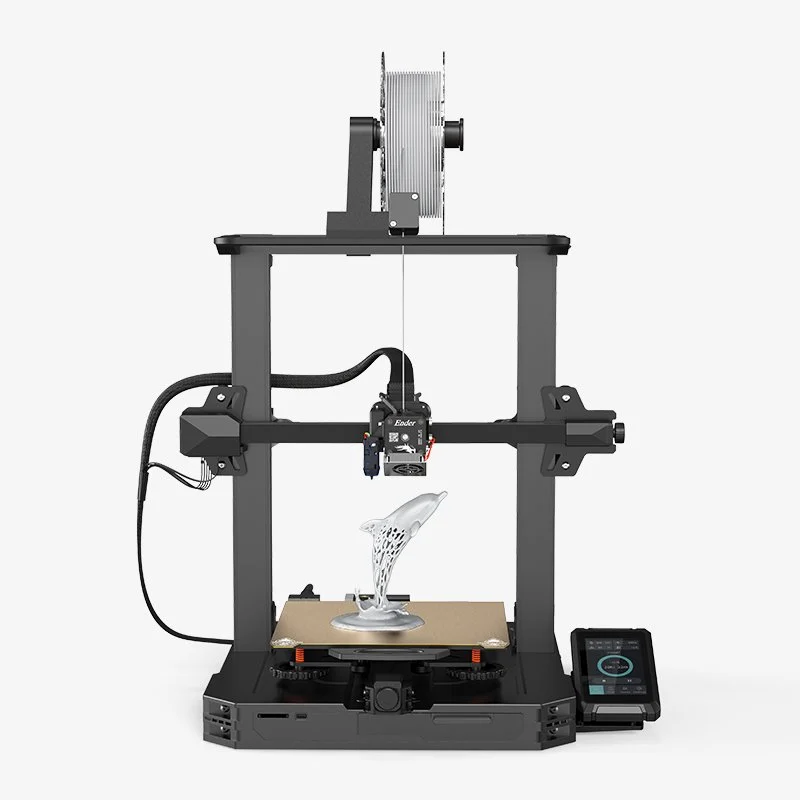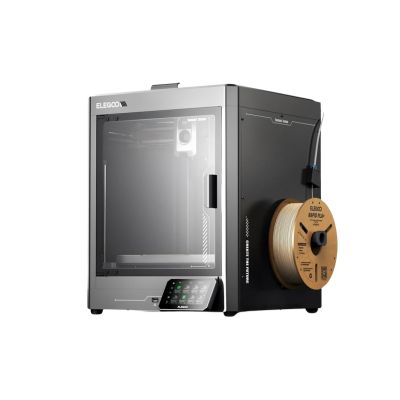Compare Ender 3 S1 PRO vs Centauri Carbon
Comparison between the best 3D printers
Choose the best 3D printer at the best price. The cheapest 3D printers are here.
Buy a 3D printer here with 3D Fila.
 |
 |
|
| Model | Ender 3 S1 PRO[BUY Ender 3 S1 PRO] |
Centauri Carbon |
| Printing Material | Filament | Filament |
| Buy Filament for Creality 3D Ender 3 S1 PRO | Buy Filament forElegoo Centauri Carbon | |
| Estimated price | $499,00 | $500,00 |
| Manufacturer | Creality 3D | Elegoo |
| Release Year | 2022 | 2025 |
| Print Volume [mm] | 220x220x270 | 256x256x256 |
| Printer Size [mm] | 450x49x620 | 500x500x600 |
| Weight [kg] | 8,7kg | 17,5 |
| Power Loss Recovery | YES | YES |
| Enclosed printer | NO | YES |
| Bed Leveling | Automatic | Automatic |
| Filament End Sensor | YES | YES |
| Bed type | Heated | Heated |
| Power supply system | Direct Drive | Direct Drive |
| Standard nozzle | 0,4 | 0,4 |
| Maximum Nozzle Temperature [°C] | 300 | 300 |
| Maximum Bed Temperature [°C] | 110 | 110 |
| Maximum printing speed [mm/s] | 150 | 500 |
| Filament holder | YES | YES |
| Camera for supervision | NO | NO |
| Recommended filaments | PLA, PETG | PLA, PETG, ABS, ASA, TPU, NYLON, CARBON FIBER |
| Recommended slicers | Cura, Simplify, Slic3r | Elegoo Slicer, Orca Slicer |
| Maximum Resolution [mm] | 0,1 | 0,1 |
| Processor | ||
| Display | Display touchscreen 4,3'' | Touchscreen 4,3'' |
| Power Supply | 350 | 350 W |
| Connectivity | SD | WiFi, SD, USB |
| Operating systems | Windows, Mac, Linux | Windows, Linux e Macbook |
| Date of registration in the system | 2022-10-11 | 2025-02-10 |
| Release date | 2022 | 2025 |
| Extra features | Creality's Ender 3 S1 PRO is an innovation in the Ender 3 series, featuring a Sprite Pro Extruder capable of reaching 300°C and dual lead screws on the Z axis, ensuring greater stability and print quality. Its PEI-coated print bed, combined with CR-Touch automatic leveling, provides excellent adhesion and ease of part removal. The user interface, via a 4.3-inch touchscreen, offers intuitive and efficient control, although it has some limitations regarding the handling of long file names and navigation. The well-designed extruder ensures effective cooling and handling of various filaments, although there may be a slight ghosting effect at high speeds due to its weight. This printer represents a balance between technological advances and operational challenges, remaining faithful to the quality expected of the Ender line. | The Elegoo Centauri Carbon is a CoreXY 3D printer with an enclosed structure, direct drive extruder, and hardened steel components for abrasive materials. It features automatic bed leveling, a touchscreen, a filament cutting system, and an elongated nozzle designed to reduce clogs. It offers Wi-Fi connectivity for remote file transfer and runs on a Klipper-based firmware, providing advanced control and precise adjustments. |
| Support for multiple colors and materials (AMS and CFS) | NO | NO |
Notes * |
||
| Cost-benefit | 7 / 10 | 8 / 10 |
| Hardware | 2.8 / 10 | 6 / 10 |
| Tela | . | . |
| Print volume | 3 / 10 | 4 / 10 |
| Performance | 1 / 10 | 4 / 10 |
| [BUY Ender 3 S1 PRO] |
Conclusion |
| In comparing the Creality 3D Ender 3 S1 PRO and the Elegoo Centauri Carbon, both printers are appealing options depending on specific user needs and preferences. The **Ender 3 S1 PRO**, although slightly more affordable, offers reliable performance with a compact print volume and notable features like automatic bed leveling and excellent filament compatibility. It retains the quality and reputation of the Ender series while introducing significant improvements in extruder technology and stability. However, its print speed and dimensions may be limiting for users seeking larger projects. Conversely, the **Elegoo Centauri Carbon**, which is a newer model, excels in offering a larger print volume and faster maximum printing speeds. It provides an enclosed structure, which can be advantageous for print consistency and working with a wider variety of materials, including more advanced filaments like carbon fiber and nylon. Its CoreXY design and advanced firmware enable precise control, making it an appealing option for users looking for enhanced capabilities. While both printers have strengths, the Ender 3 S1 PRO may be more suitable for hobbyists or those who prioritize ease of use and a traditional design, while the Centauri Carbon will likely attract those who need expanded functionality and improved materials versatility. Ultimately, the choice between the two will depend on the user's budget, project specifications, and material requirements. |

